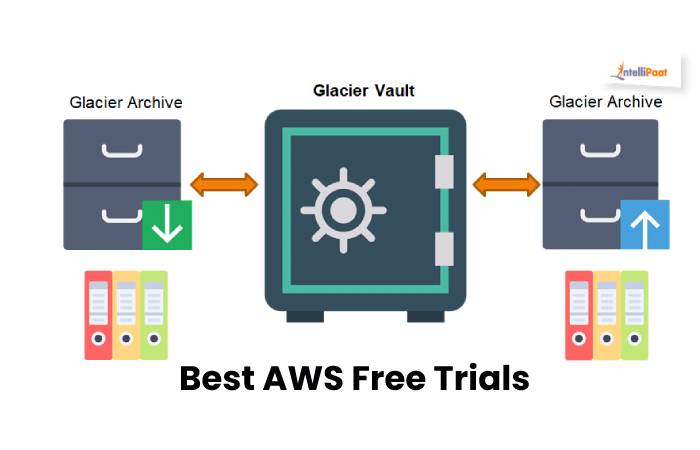What Are The Uses Of The Amazon Glacier Curious about possible uses for Amazon Glacier. Here we provide a detailed description of the most common and important practical uses of Amazon Glacier.
As the IT world evolves, Amazon Glacier is the ideal AWS cold storage platform for handling critical data at rest that plays a vital role in helping businesses thrive. Doff course, the differentness of data requires ot However, such data must always be available.
Businesses deal with a large amount of static data that must occasionally be retrieve without regular access. These static data files have a long storage period and are stored through Amazon Glacier as a cold storage option. What Are The Uses Of The Amazon Glacier There are different use cases where Amazon Glacier applies regardless of data type. The best part is that it is a highly cost-effective cold storage solution compared to similar service providers.
Table of Contents
Amazon Glacier and Amazon S3
Before going ahead and reviewing the use cases for Amazon Glacier, it is vital to understand the differences between the two primary Amazon storage services. People see them as ideal storage options and don’t know what to choose.
Therefore, it is crucial that you know the possible differences between these two services. Glacier and S3 are geared towards giving you high resiliency to protect against system failures and data breaches. In addition, both services allow you to store data without number or limit.
But the difference between them is due to how the stored data is access. With Amazon S3, you can often get data priced accordingly by AWS. But data stored with Amazon Glacier last a long time. That is why AWS has designed a pricing module based on the service these two storage services offer. You can choose the one that suits you best.
List of uses for Amazon Glacier
Before you choose Amazon Glacier to store your data, you should understand the practical uses of Amazon Glacier. So let’s dig deeper to check it out.
What are the benefits of Amazon Glacier?
Amazon Glacier offers the following benefits:
- Less cost. Glacier is designed to be Amazon’s lowest cost storage class. It allows an organization to store large amounts of data at a lower cost than other Amazon storage services.
- Protects the archive database. An organization does not need to maintain its archive database. AWS handles management tasks such as hardware and capacity planning.
- Durability. Glacier is deployed in at least three physical AWS Availability Zones simultaneously, increasing the ability to restore data if data is lost in one region.
- Scalability. Organizations can scale stored data up or down as needed.
- Multiple data import options. Organizations can choose between expedited, standard, and bulk purchases.
- Security. S3 Glacier supports security and compliance standards such as the General Data Protection Regulation, the Payment Card Industry Data Security Standard, the Health Insurance Portability and Accountability Act, and the Federal Health Insurance Administration Act. Information. It also supports encryption and monitors storage API call activities.
- Integration. Glacier integrates with AWS offerings such as Snowball and Direct Connect.
What Are The Uses Of The Amazon Glacier and Amazon S3
Although Amazon considers Glacier an official part of S3, these are still two different storage options with two other use cases.
Amazon S3 is a high-speed web-based cloud storage service designed for online backup and archiving of data or applications on AWS. Therefore, Amazon S3 is also used for disaster recovery, applications, and websites.
Amazon S3 Glacier provides durable storage for any data format. Data can be access within a standard three to five hours. In addition, a developer can use Amazon Glacier with storage lifecycle management and convert infrequently used data to cold storage to save money.
The main difference between the two Amazon storage services is that S3 is design for data that needs to be retrieved in real-time, while Amazon Glacier is used for archiving. Therefore, S3 Glacier is reserved for low-cost storage cases where data is not suddenly need. However, S3 is recommended when an organization needs frequent and fast access to its data.
Storage And Receipt Of Digital Media Assets
When your business works with digital media files, the amount of data to store is enormous. Some of the digital media data may be in gigabytes and terabytes. Therefore, some companies wishing to hold such digital media data long-term may need to experience significant cost increases across different platforms.
However, with the uses or use cases of AWS Glacier, this problem has been completely solve, and the storage aspects have also been simplified. Glacier requires a tiny amount and infinite storage space to store digital media assets and will receive them in the future. So, in the long run, you can expect to create a simple, effective, and inexpensive workflow as you deal with ample data storage and retrieval.
Data Backup and Restore in Critical Failure Situations
Companies must pay attention primarily to planning for disasters or failures. Additionally, business owners need to understand the importance of backing up essential data to ensure its ability to be restore in times of internal failure or disaster. What Are The Uses Of The Amazon Glacier Of all the uses of Amazon Glacier, this is one of the most important that makes it excellent and necessary.
Helps you be prepare by backing up vital data for emergency restoration or recovery. It doesn’t matter if you run your business in the AWS Cloud or elsewhere; You can use Glacier to benefit from a secure and durable backup storage system at a very reasonable and low price.
Several import options are available to run and restore your essential data whenever your business needs it. It doesn’t matter what your RTO (Recovery Time Objective) is; You’ll get the information quickly and be able to get back to your regular work on time. The recovery time objective indicates the urgency of how fast you want your data to be restore or recovered.
Best AWS Free Trials

Data file
Most businesses must adhere to compliance regulations to keep operations running smoothly. For this reason, companies need to store data files for a long time. Meeting compliance standards is significant for healthcare, finance, and other industries. It is because the financial and health sectors have vital information that must be protect.
This data can be store for the next ten years. Therefore, companies must rely on a reliable and secure cold storage solution since the information is not use frequently. Again, Amazon Glacier comes to the rescue! Keeping data for that long can be very expensive for people. Because Amazon Glacier is cost-effective, it may be the best option for data archiving needs.
Replacement of magnetic tapes
Tape libraries still exist in this world today. They are store onsite or offsite, depending on the amount of use. Either way, storage is expensive and requires a lot of maintenance, adding to the cost. As a manage service, Amazon Glacier is intend to take care of all the general aspects of tape library management.
The best part is that Amazon Glacier doesn’t have any upfront costs you need to pay. It comes with a pricing model that allows you to pay only for the transactions you use. Storage Gateway can be use to store data files while running your business in a hybrid cloud environment. Don’t worry. And it can help you push data to Glacier and S3 storage without interrupting your current workflow. Therefore, using Amazon Glacier streamlines the entire tape library storage process.
Long-term storage of data libraries
Amazon Glacier also intends to help you with the aspects of the service to store data regardless of the time barrier. For example, some government agencies’ critical and sensitive data libraries require long-term storage. These high-profile government agencies are not short on money for their storage needs but primarily demand durability.
And with so much data, keeping records and managing general administrative tasks is hard. Therefore, Glacier intends to use the capabilities of the manager service to implement the self-healing potential of such a large number of data libraries. In addition, it means that Amazon Glacier performs continuous data integrity checks for all long-term archives to find unverified objects and fix them as quickly as possible.
Amazon aims to bring new features to all of its services. And on top of that, AWS Deep Archive is the new storage class associate with Glacier. Deep Archive aims to store data for a long time, as it has for over a decade.
Deep Archive aims to offer lower prices for storing data that is so important to comply with regulations or to maintain government records. Prices are lower than Amazon Glacier’s standard storage service. Therefore, you might consider using Deep Archive for your extreme long-term storage solutions.
As a result
These are just some of the uses of Amazon Glacier currently being implement in enterprises. People from different industries understand the need to store and use data primarily for job gains. Therefore, people must keep data inactive or static and look for easy access when needed.
Regardless of the type of business you have or the cloud environment you apply to, you can use Amazon Glacier to store and retrieve cold data seamlessly and without too much hassle. To learn more about AWS services, we recommend enrolling in AWS training courses and getting start with hands-on experience.


